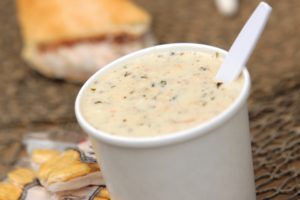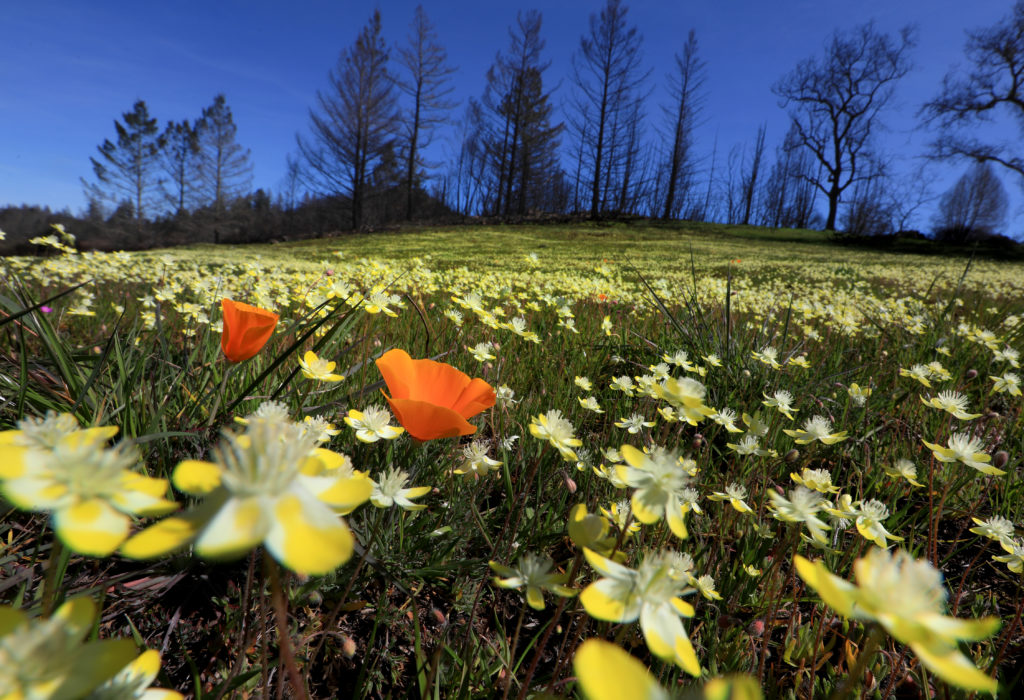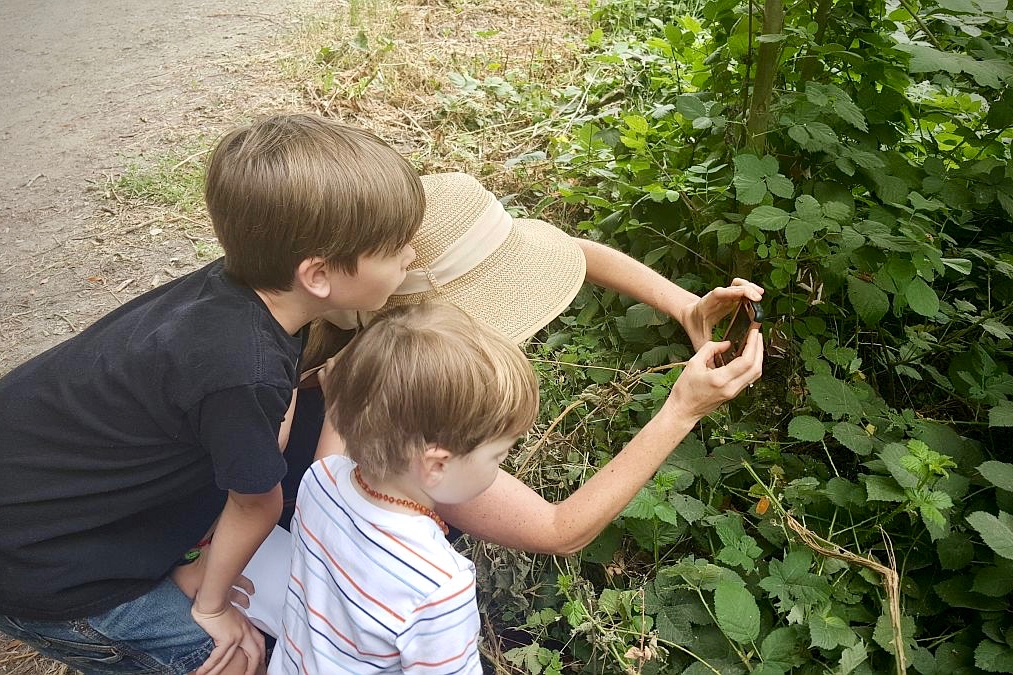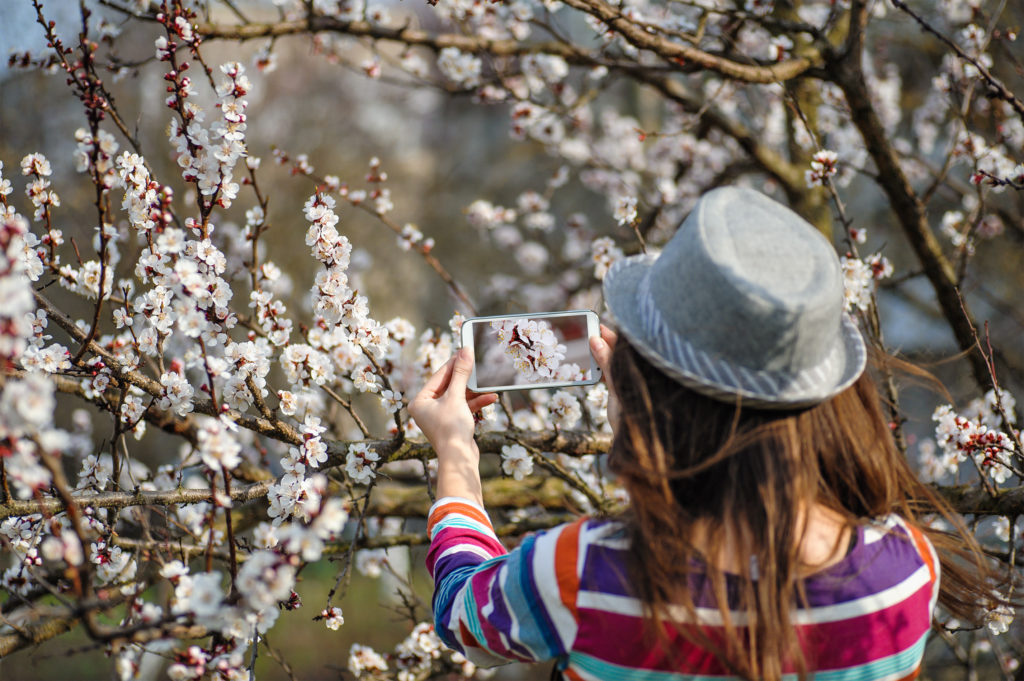Spending time outdoors, enjoying Sonoma County’s many parks and open spaces, is just one of many things we’re missing as we continue to shelter in place to help decrease the spread of COVID-19. But there are more ways to connect with nature than heading to a park. From birds and shiny bugs in our backyard to flowers and weeds growing in the cracks of sidewalks, nature is all around us — sometimes we just need to be reminded to look more closely.
The fifth-annual City Nature Challenge (CNC), which kicks off this Friday in nearly 250 cities around the world, is a great opportunity to explore plants and wildlife close to home. The four-day program, organized by the California Academy of Sciences in San Francisco and the Natural History Museum of Los Angeles County, is one of the world’s largest citizen science events and encourages participants to document urban biodiversity.
Armed with just a smartphone, Sonoma County residents and people around the world can take part in the event by snapping pictures of plants, animals and insects and then uploading those images to a free app for identification. This way, they can find out what species are living in their backyard and neighborhood while also helping scientists study and protect them.
During last year’s City Nature Challenge, 292 people made more than 4500 observations in Sonoma County, documenting 960 species. This year, like with so many other events, the coronavirus pandemic has forced organizers to make changes to the program — including removing the competitive element that has been part of previous events.
“It’s all about collaboration this year because we don’t want people to break any of the regulations or rules around COVID-19 just because they want to make more observations for their cities,” said Alison Young, co-founder of the City Nature Challenge and a Sonoma County resident.
During previous events, participants have often headed to parks to make observations. This year, due to the coronavirus pandemic, explorative excursions will need to take place closer to home.
“A lot of people, when they think about nature and biodiversity, they think of Yosemite and Point Reyes, but there’s an incredible amount of biodiversity even in urban spaces, and especially here in Sonoma County,” said Young.
CNC organizers have created a handy list of ideas and resources to help participants look for, find, and even attract nature to their backyard. Colorful bingo cards, highlighting common species found in California backyards and neighborhoods, help make the event fun and educational for all ages.
“Right now, people are feeling disconnected from the natural world with most of our parks, playgrounds, and beaches closed,” said Margaret Boeger, Education Director at Santa Rosa’s Pepperwood Preserve. “This is a chance for families and individuals to take a closer look at the wildlife and nature that we may overlook everyday.”
Participating in the City Nature Challenge is easy. It only takes a couple of minutes to download the free iNaturalist app. (The app was developed as part of a Master’s final project at U.C. Berkeley. Pepperwood Preserve was one of the first sites to test out this model of citizen/community science.)
After downloading the app, you can start taking photos of birds, bugs, and plants – anything that catches your attention – and upload those images for identification. Remember, the challenge is not to identify flowers and vegetables you’ve planted in your yard, but the wild plants popping up in between and the critters that have moved in.
Participants don’t have to know anything about what they see, they just need to be curious and take good photos. Using artificial intelligence or “machine learning,” the iNaturalist app scans the photos and gives suggestions based on what the objects look like, and other observations that have been noted in your area. Once the image is uploaded, crowdsourcing among experts and the iNaturalist community helps confirm or, if necessary, change the identification.
“This year, we’re really excited because this is the most “city” the City Nature Challenge has ever been,” said Young. “We’re going to have a better sense from this year of what species that are living and doing well in people’s backyards; in the urban matrix.”
“Who knows, someone may even discover a new species; it’s happened before!’ added Boeger. “By looking closely at a tree outside our window or a flower with a bee in a nearby bush, we have a chance to see that nature is everywhere, not just at a park, in a museum, or in a forest.”
The City Nature Challenge runs Friday, April 24 through Monday, April 27. Collective results will be released on Monday, May 4. Download the iNaturalist app here.















